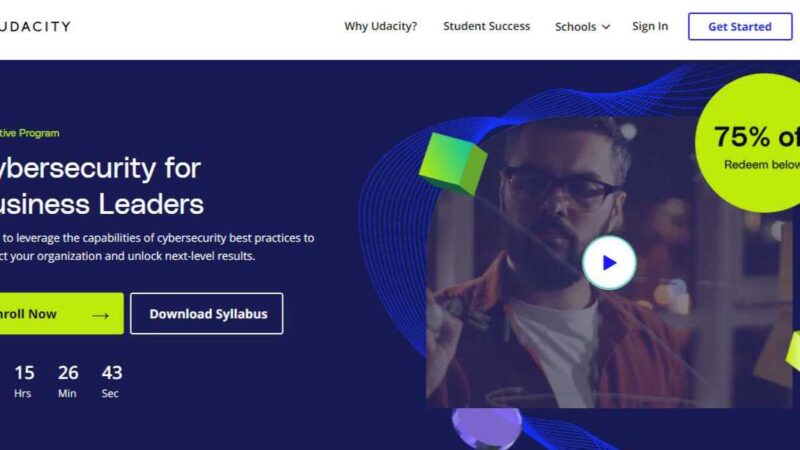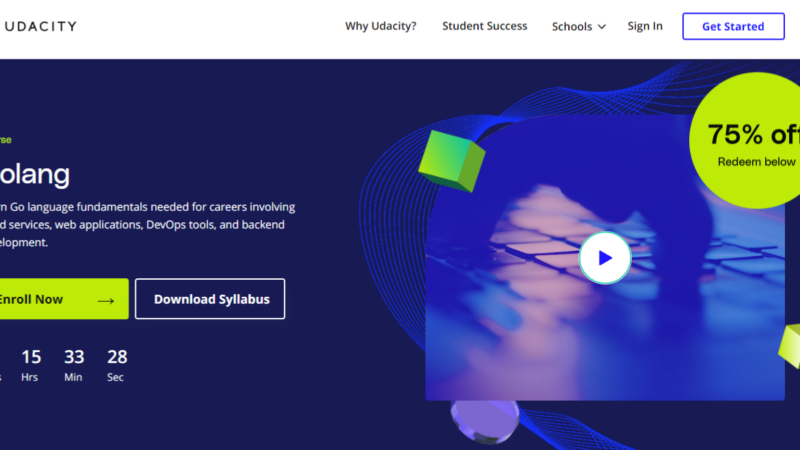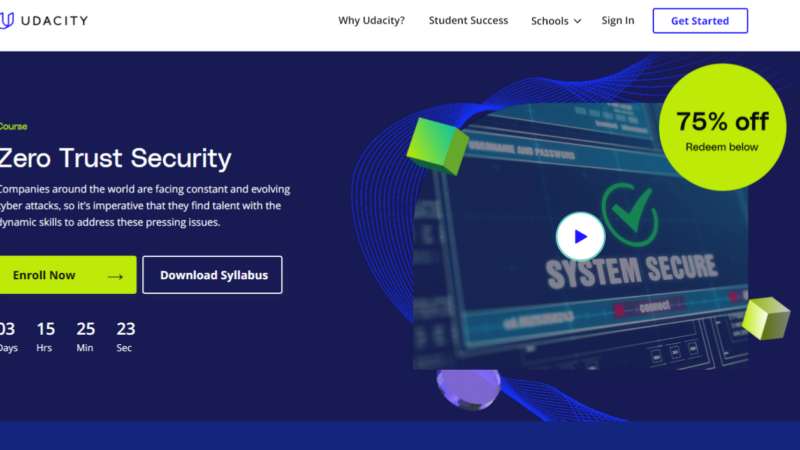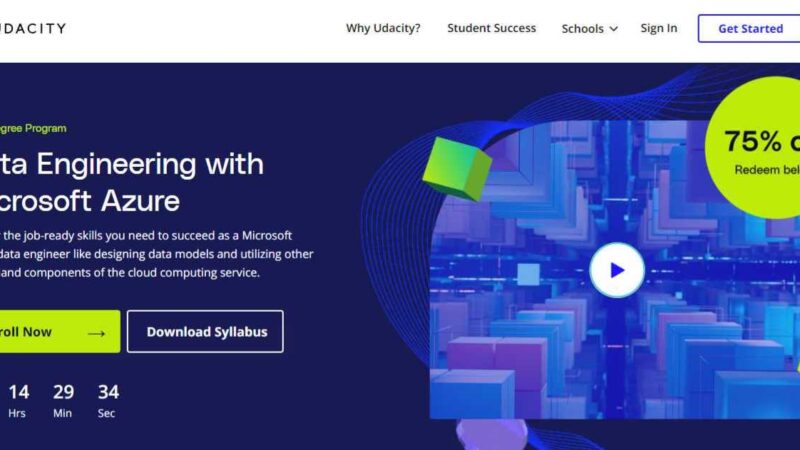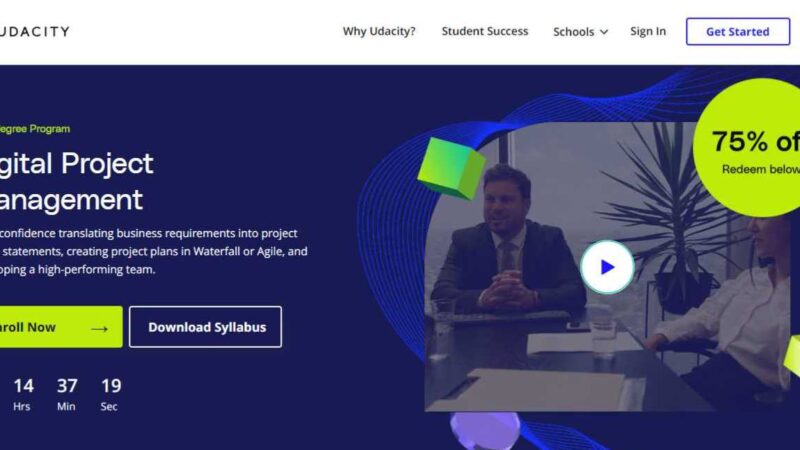Udacity Robotics Nanodegree Review

We’ve all thought about it a time or two; a world filled by robots and automated systems that completely take over the world. The next revolution where robots take the place of man, doing jobs that before were tedious or undesired, is said to be right around the corner. That world that we might have thought of once as imaginary is now a reality and, as a robotics software engineer, you could be working on the very technology that will power them all.
You will not only work with other innovative individuals, brainstorming and designing but, you will also build and test bots throughout the process. Because technology is constantly advancing, this is a career that requires a strong foundation and out of the box thinking. This is not a career where the answer is always clear but possibly something new and cutting edge that will change the entire field.
If this has caught your attention, you’re probably wondering what it takes to start the path to becoming a part of a robotics team. While several options are available on and offline, we’re here to speak about one noteworthy program, the Udacity Robotics Nanodegree. This certificate program is said to come packed with all you need to start a career as a robotics software engineer. To verify this claim, we’re taking a look at Udacity both as an academy and as their role in the development of this course specifically. We hope by the end of this review you have enough to decide if the career path and the course is right for you.
What is Udacity?
If you’ve never heard of Udacity then, brace yourself. They have had a solid reputation since their birth back in 2011. What started from a goal to offer free computer science courses to anyone with internet access has now become a full-blown certificate program with some pretty powerful partners. These partners are big names like Google, Mercedes and Amazon, just to name a few. While there are free courses, nanodegree courses come with a price tag, which we will of cover below. Apart from the list of prestigious partners that help with the development of some courses, Udacity attempts to add some value to their nanodegrees by tacking on extras. Each nanodegree includes:
- Projects inspired by real industry problems
Each course is sprinkled with projects and some come with capstones at the end. These are sometimes made in collaboration with top-notch companies, attempting to mimic real problems that they may be facing or have faced. Hands—on experience is an attractive feature to have nowadays, separating you from other graduates of other academies that only provide lectures.
- A Mentor
It can be tough to convert completely online but, you’ll have a mentor there to cheer you on. They are there to not only help you with technological problems if they pop up but also are there to help you cope with the workload.
- Help Landing a Job
You are also provided with amazing career services to help you prepared for the big day. You’ll get help with everything from your resume to the interview, getting the chance to partake in a mock interview with feedback to help you be your best. On top of that, access to the Udacity career database is yours, which is often crawling with company recruiters on the hunt for new graduates.
- Complete Freedom for your Schedule
When you begin a course, you’ll have as much time as you need or want to finish it. Plus, you can access the course at anytime day or night from anyplace that has a solid enough internet connection. Make your schedule how you see fit and how you want it with Udacity’s flexible learning options.
Before we get to the prerequisites and the course breakdown, let’s take a look at your instructors. They will be guiding you through the process sometimes giving you step by step instructions and other times advice from their time in the field. These instructors are:
Sebastian Thrun
Sebastian is the founder and president of Udacity and Google X. He has worked on a number of things in the field including self-driving cars.
David Silver
David spent the earlier parts of his career as a research engineer with Ford. He then branched out and would work with other lead companies before coming to Udacity as the lead of Autonomous Systems.
Karim Chamaa
Starting off as a mechanical engineer, Karim would take it over to mechatronics and robotics where he gained a sharp expertise in kinematics and control.
Julia Chernushevich
Before coming over to Udacity to share her knowledge, she worked on electric vehicles for underground mines. She also taught mechatronics engineering at the University of Waterloo.
What are the Prerequisites?
A course like this requires some knowledge in a few areas. This is considered to be an intermediate to advanced class, so if you’re brand new to the field you might want to begin working on your foundation. The academy suggests that you have the following before sign up:
- A deep understanding of an object-oriented language ex. Python or C++
- A good grasp on probability both conceptually and applicably
- An understanding of calculus
- Strong foundation in linear algebra
- Basic commands lines of Linux
They do provide a note and link at the end of the prerequisites section suggesting that if you need to bush up or start working on your foundational skills in any of those prerequisites listed above, you can start here: Intro to Self-Driving Cars.
Udacity Robotics Nanodegree Course Breakdown
So, now time to break down the course. There are six sections in total, each one building off of the next. Toward the end, you’ll have a chance to bring all of your knowledge together with hands-on practice getting your shot at building your very first bot. The sections of the course are:
Into to Robotics
This course comes with an introduction to the subject where you will get a good grasp on the fundamentals and meet your instructors. You’ll also have learned about the tools and programs you’ll be using throughout the course to increase your chances of success with the program.
Gazebo World
This section is all about environments. You’ll get first-hand experience with the most used simulation engine when creating and deploying bots. This part of the course will end with practice where you will build and create your own environment using Gazebo on which you can build your bot.
ROS Essentials
Learn the ins and outs of ROS, getting a look at how useful they can be when developing and reusing previously built bots. By the end of this section, you will be able to write your own ROS nodes using C++. The project at the end of this section is super cool, asking that you set up and environment plus, create a robot where they chase after and follow a ball. This will help you master the art of movement.
Localization
Working with Gaussian filters, you’ll learn how to search for exact positions relative to fixed objects which is a useful tool for mapping. In this section, you will use Monte Carlo Localization (MCL). At the end you will practice these techniques and this knowledge by mapping out the exact locations of objects within an environment.
Mapping and SLAM
Keeping localization in mind, you’ll combine this knowledge with Mapping (SLAM) to produce algorithms that will provide accurate position information across a wide range of points. You will end creating a mapping application, which can map out an entire area plus navigate within it.
Path Planning and Navigation
Combining all thing from the past few lessons, you’ll go a bit deeper into the possibilities of movement by working with algorithms which allow for movement and transportation within a fixed environment. At the end of this section, you’ll work on a home robot which can move things around from one place to another.
While you do have all the time you need to complete the course, you might want to consider that the total time it takes affects the price but, more on that in a bit. For now, we’ll give you Udacity’s recommendations. They claim that, when dedicating around 10 to 15 hours a week, the course will take around 4 months.
At the moment, there is an offer attached to each nanodegree where the academy is offering one month free. The way Udacity charges is by monthly access, where you can either pay as you go or, bundle up based on the recommended time it takes. Each month of access is currently set at $359 allowing you to take as long as you like but, keep in mind that the longer you take, the more the course will cost in total.
If you choose to go with Udacity’s recommended timeframe, you can bundle and save 15%. This combined with the free month promo gives you 5 total months for the price of 4, with each month coming out to $232. Either way comes with their own set of benefits depending on every learner’s availability and budget.
Learners that have already taken the course and have spoken about and shared their experience rating the course an overall 4.5 out of 5-stars. While the feel is positive overall, not every learner was satisfied, either to do with the cost or the level of difficulty. Here is what a few of them have said:
“the projects are very good and if you are willing to learn, the monitors help you. I think the feedback of the projects is always cool, you have to improve more and the tutors find this, I had a lot of difficulty in the project, pick a arm but in the end, after a lot of effort I was able to understand reverse kinetics and even apply it to my universe real. I’m really enjoying the course.” (5 stars)
“The projects are very difficult and unprecise described. If you get stuck, you can’t expect any help from the mentor – either they never answer to your questions, so you have to look for another mentor, or the responses are very unprecise.” (1 star)
Will I Find a Job?
Seeing that many companies are beginning to evolve their practice and their technology used, the demand for those with the knowledge to create and build tomorrow’s technology are predicted to be in high demand. The Bureau of Labor Statists estimated that a 9% increase would appear from 2016 to 2026 where over 25,000 jobs would be created. This comes with an attached average salary of over $81,000 annually, increasing as you move further up the ladder.
Another article that went in depth on the topic from UAT Tech proclaimed that this is a career of the future and as technology advances, so will the demand for those with the knowledge to create new and innovative technologies.
Yay or Nay?
While you are the one that ultimately must decide, for us, the academy seems to check all the right boxes. The thing that we would suggest to keep in mind when deciding to take the course are the time and the suggested prerequisites. Because the time directly affects the cost, the faster you finish the more affordable the total of the course becomes. Plus, having the suggested base knowledge means that you won’t have to take extra time to study up on an unknown topic.
Udacity puts a lot of efforts into bringing learners of all levels access to computer science courses. It is these extras and features that we like the most, on top of a team of knowledgeable instructors that have years of industry experience. On top of all of that, the collaborations with companies across the field brings a large chance of landing a job within the first few months of successful completion of the course. Sounds like a winner to us. Now the choice is in your hands, and your future career is waiting.

